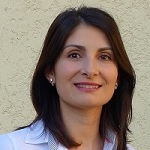Carbon Materials in Environment Protection & Selected Papers from CESEP2017
A special issue of C (ISSN 2311-5629).
Deadline for manuscript submissions: closed (15 June 2018) | Viewed by 21689
Special Issue Editors
Interests: hybrid carbon materials; confinement of metal-based NPs in carbon; carbon synthesis and modification (mesoporous carbon, activated carbon, hard carbon, graphitic carbon); hard and soft-templated carbon; biosourced derived carbon; carbon surface chemistry and reactivity modification; carbon-based materials for gas and energy storage (supercapacitors and batteries); carbon for air and water cleaning
Special Issues, Collections and Topics in MDPI journals
Interests: preparation and characterization of carbonaceous materials for environmental applications (water purification and remediation, gas adsorption, separation and storage, sealing applications)
Special Issue Information
Dear Colleagues,
The 7th Conference on Carbon Materials for Energy Storage and Environmental Protection (CESEP2017) will be held in Lyon, France, 23–26 October, 2017. The Conference is devoted to the synthesis, functionalization and application of new types of carbon and graphite forms, such as graphene, fullerenes, carbon nanotubes, nanofibers and composites. Such materials have already found many applications in environmental protection, water purification and remediation, gas separation and storage, solar energy conversion and use, green chemistry process, the power industry, electronics, biotechnologies and medicine, e.g., as adsorbents, sensors, catalyst supports, electrodes in energy sources (supercapacitors, batteries, fuel cells), heat storage devices, implants, etc. CESEP’17 conference emphasis is, not only placed on fundamental research, but also on new areas of application.
This Special Issue selects papers from the CESEP2017 conference and covers a very broad scope, from synthesis and functionalization of different forms of carbon materials (graphenes, nanotubes, nanoporous, graphite) to their applications in water purification, gas separation and storage, energy storage and conversion, electronics, biotechnologies, etc.
We invite authors to contribute original research articles, communications, as well as review articles, to this Special Issue.
Dr. Camélia Ghimbeu
Prof. Laurent Duclaux
Guest Editors
Manuscript Submission Information
Manuscripts should be submitted online at www.mdpi.com by registering and logging in to this website. Once you are registered, click here to go to the submission form. Manuscripts can be submitted until the deadline. All submissions that pass pre-check are peer-reviewed. Accepted papers will be published continuously in the journal (as soon as accepted) and will be listed together on the special issue website. Research articles, review articles as well as short communications are invited. For planned papers, a title and short abstract (about 100 words) can be sent to the Editorial Office for announcement on this website.
Submitted manuscripts should not have been published previously, nor be under consideration for publication elsewhere (except conference proceedings papers). All manuscripts are thoroughly refereed through a single-blind peer-review process. A guide for authors and other relevant information for submission of manuscripts is available on the Instructions for Authors page. C is an international peer-reviewed open access quarterly journal published by MDPI.
Please visit the Instructions for Authors page before submitting a manuscript. The Article Processing Charge (APC) for publication in this open access journal is 1600 CHF (Swiss Francs). Submitted papers should be well formatted and use good English. Authors may use MDPI's English editing service prior to publication or during author revisions.
Keywords
- Synthesis of new forms of carbon
- Carbon for energy storage (Supercapacitors, Batteries, Fuel cells)
- Carbon for gas adsorption, separation and storage
- Heat storage
- Solar energy conversion
- Carbon material as a chemical sensor
- Carbon as catalyst and catalyst support
- Carbon sealing material
- Carbon in green chemistry and recycling processes
- Carbon for water purification and remediation
- Biological and health applications of carbons
- Simulations and computational methods






